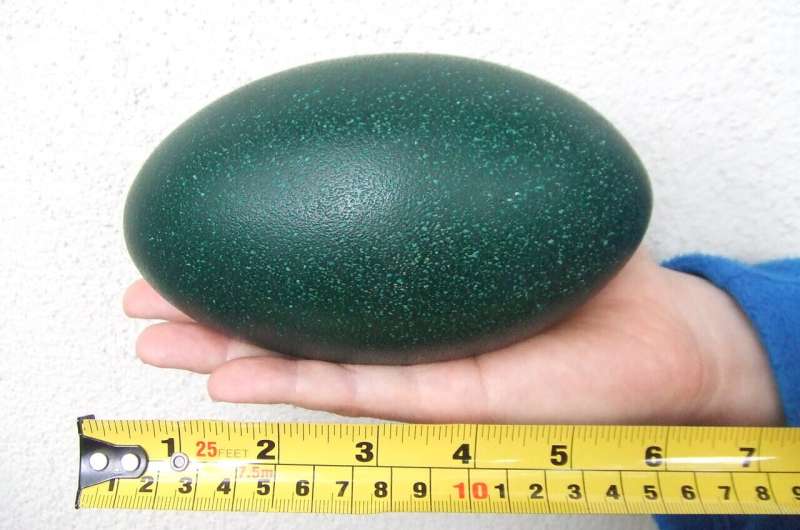May 26, 2021 report
An almost complete extinct dwarf emu egg found on King Island

A pair of researchers, one with the UK's Natural History Museum, the other a King Island historian, has found an almost complete extinct dwarf emu egg on King Island. In their paper published in the journal Biology Letters, Julian Hume and Christian Robertson describe the egg and compare it to other dwarf emu eggs and also with the eggs from the mainland emu.
The emu is a flightless bird found only in Australia and its nearby islands. It is the second largest bird after the ostrich. Prior research has shown that in addition to the mainland emu, there were several types of dwarf emus living on at least three islands off the southern coast of Australia—all of which went extinct shortly after the arrival of European settlers.
The three islands, Tasmania, Kangaroo and King, all had their own species of dwarf emu, and each was named after the island it inhabited. Prior research has suggested that the reason the emu shrank in size on the islands was because of limited resources. Of the three, the King Island emu was the smallest, standing at just under a meter tall and weighing half that of the mainland emu.
Little is known about the dwarf emu due to their sudden disappearance, but scientists have managed to find and study several Tasmanian emu eggs and one from Kangaroo Island. But until now, no eggs from King island had been found.
The researchers discovered the egg in a sand dune. After retrieval and inspection, the egg was found to be very nearly complete, giving the researchers an excellent specimen for study.
The researchers found that like other dwarf emu eggs, the one on King Island was very nearly the same size as the eggs from the much larger mainland emu. They theorize that, due to the harsher conditions on the islands, the emus living on them had to remain in their shells for longer periods of time—a larger shell would allow them to stay in their shells until they could walk and forage for themselves. It would also keep them warm enough to survive the cool island nights.
More information: Julian P. Hume et al, Eggs of extinct dwarf island emus retained large size, Biology Letters (2021). DOI: 10.1098/rsbl.2021.0012
Journal information: Biology Letters
Provided by Science X Network
© 2021 Science X Network


















